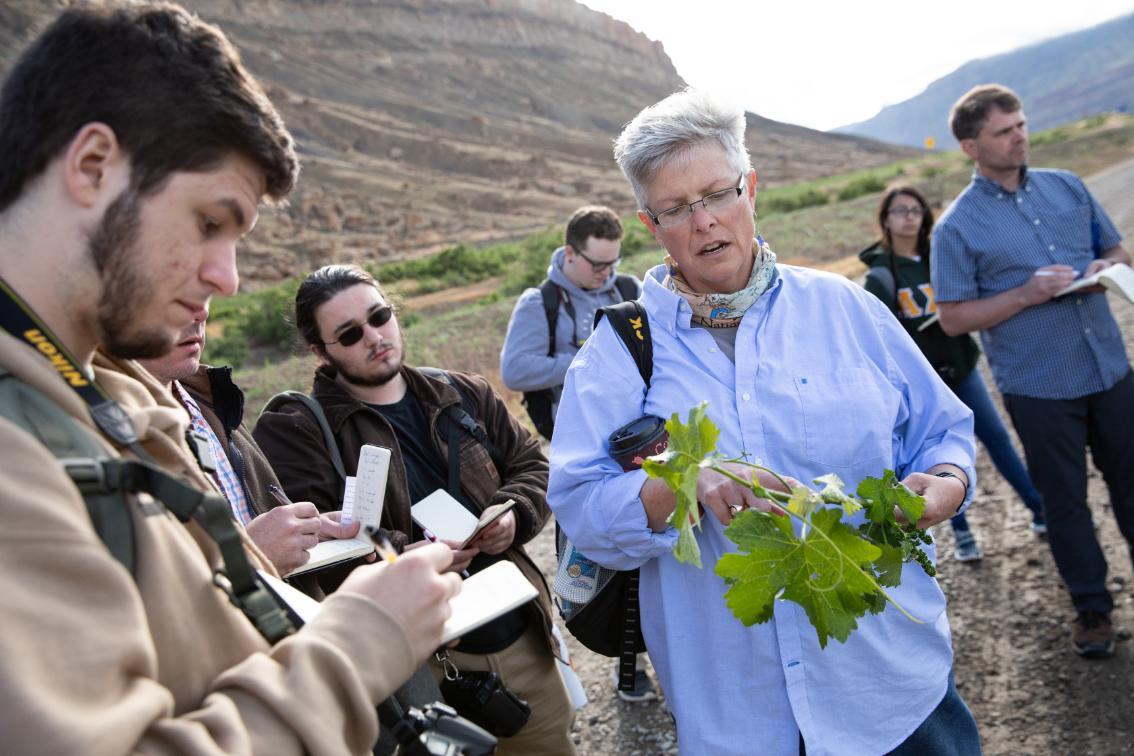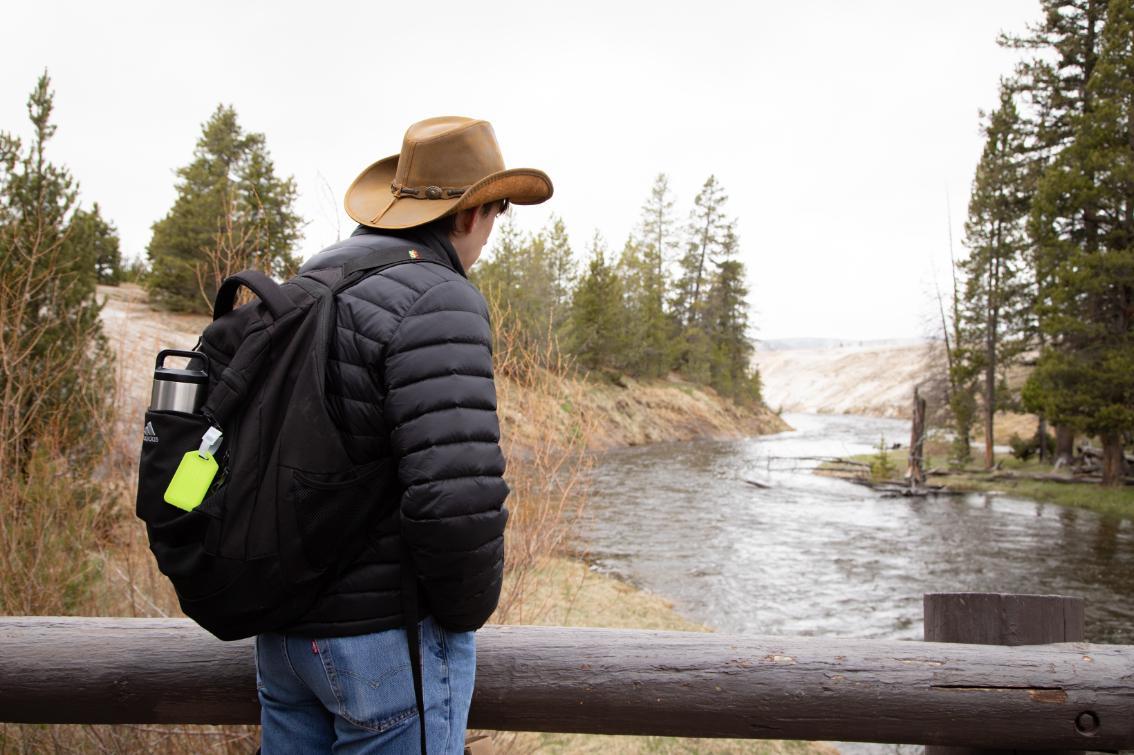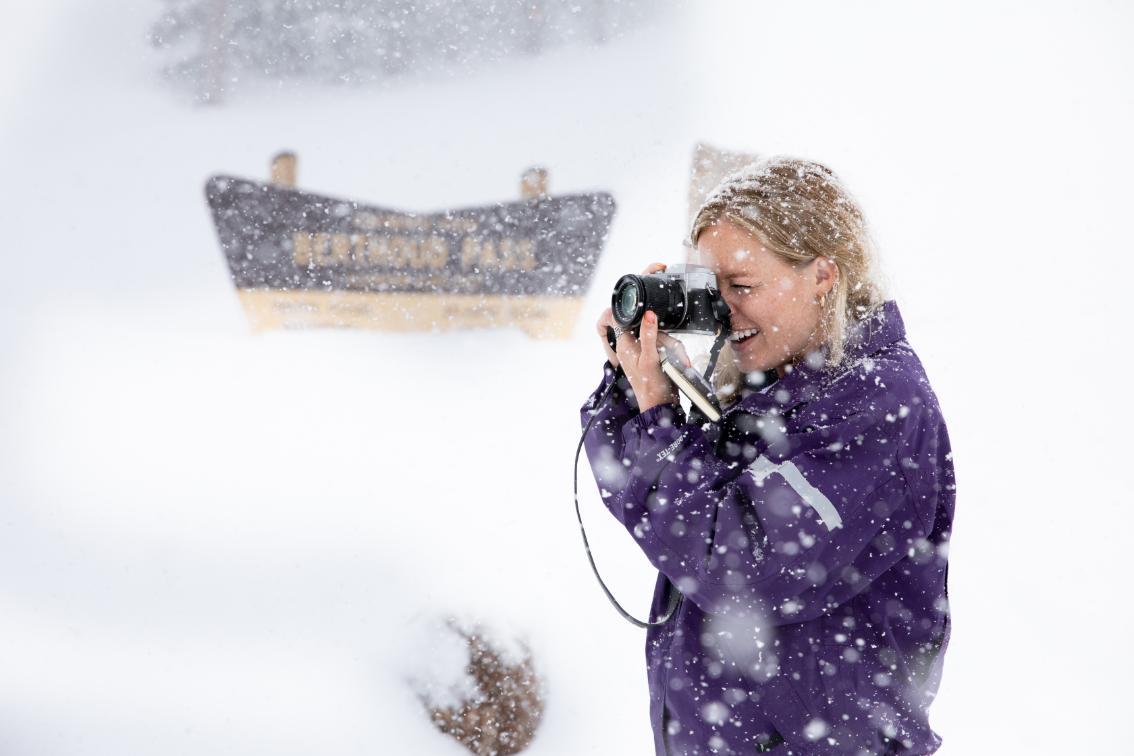

For some Longwood students, the eureka moment comes the first time they see a wolf in the wild at Yellowstone National Park. For others, it’s when they witness firsthand the impact of erosion on the coastal community of Tangier Island. Simply walking the streets of New Orleans—where cultural, historical and social identities meld, clash and are exploited—has been eye-opening for others.
Those moments, which challenge and alter the preconceived notions students have developed about a particular place or civic issue, are what Longwood professor of biology Dr. Alix Fink refers to as a “turning point.” When and how those turning points occur is unpredictable, but that they will occur is a near certainty rooted in the design of Longwood’s groundbreaking “study away” programs through Brock Experiences.
One codification of that design is laid out in prescriptive detail in a new book written and edited by Fink, also a Longwood associate provost; Dr. Heather Lettner-Rust, director of Longwood’s Civitae core curriculum and professor of English; and professor of sociology Dr. JoEllen Pederson.
_edited-1134x863.jpg)
Through a collection of essays spanning 18 chapters, Experiential Civic Education: Encouraging Student Engagement Using the Field Immersion Framework details the structure of Longwood’s unique brand of experiential civic education, which its authors label the “Field Immersion Framework.” Published by England-based publisher Routledge, the book not only provides concrete examples of how those excursions prepare students to become civically engaged in their communities, it also argues for the necessity of higher-education institutions to do so for the health of democracy on both a local and national level.
The issues we have our students confront in these experiences are complicated and contentious. If it were an easy solution, somebody would have taken care of it already, right? And so our students become members of this big, messy democracy where they're challenged to practice the skills they'll use in life as contributing members of their communities.
Dr. Alix Fink, associate provost of research and academic initiatives and professor of biology
“The issues we have our students confront in these experiences are complicated and contentious,” Fink said. “If it were an easy solution, somebody would have taken care of it already, right? And so our students become members of this big, messy democracy where they’re challenged to practice the skills they’ll use in life as contributing members of their communities.”
The essays were written by faculty, students and administrators who have engaged in Longwood’s unique brand of experiential civic education, including destination-focused Brock Experiences in Alaska, Chesapeake Bay, Yellowstone National Park and more.
By approaching those various locations as “democracy labs,” as field scientist Fink calls them, the authors’ Field Immersion Framework encourages students to immerse themselves in a civic issue, engage with stakeholders across the spectrum, and intentionally reflect on what they hear and how it impacts their personal perception of the challenge at hand.
Issues explored range from debates about land rights and oil drilling in Alaska to the broad impact of re-introducing wolves in Yellowstone. And while participating students may never return to the sites of those explorations, the experience provides universally applicable lessons they can apply in any group or community setting, small or large.

“We want them to learn how to seek out competing viewpoints to get a fuller understanding of a given issue,” said Fink. “Can they consider a perspective they personally may not agree with? How does a potential solution affect one of those groups vs. another? How are their own assumptions influenced by listening to others who experience the issue in different ways or simply by seeing something they had only learned about in a book or on a screen?”
The Field Immersion Framework structure outlined in the book is informed by nearly two decades’ worth of learning and collaboration by Fink, Lettner-Rust, Pederson and numerous collaborators from previous courses. It includes four distinct areas of focus that serve as scaffolding for all experiential learning opportunities the trio designs: foregrounding, immersion, reflection and civic agency.
Foregrounding is “pre-departure” work that educates students about the place they will visit and develops skills they will use once there, such as interviewing and reflective writing. Immersion is the intentional exposure of students to the place’s features, people and perspectives influenced by the civic issue at hand. Reflection is the recurring analysis of what students see, hear and experience and takes the form of daily writings, group discussions and broader retrospectives. The last piece, civic agency, is the long-term impact the entire experience has on a student to become civically engaged in their own community.
Through the essays the trio has written or edited, the book defines how that structure goes beyond simply dropping students into a foreign place and instead immerses them in an intentional learning environment.
“Experiential learning has been happening before John Dewey in the early 1900s,” said Lettner-Rust. “He stressed the importance of experiences outside the classroom and blending those lived experiences with reflection.”
Fink, Lettner-Rust and Pederson contribute multiple chapters of their own, but their larger role as editors was cultivating reflections by others who experienced Brock Experiences — including faculty from different disciplines, staff from different departments and students from different backgrounds and majors. That interdisciplinary design is also one of the core principles of the Field Immersion Framework outlined in the book.
One of the superpowers of the programs is that they are very much interdisciplinary. There’s often a librarian involved or a student affairs staff member. There are faculty from different backgrounds, and students who may be biology or business or history majors. In bringing together these different perspectives, you’re able to try things and see how they shake out.
Dr. Heather Lettner-Rust, professor of English and director of Civitae
“One of the superpowers of the programs is that they are very much interdisciplinary,” Lettner-Rust said. “There’s often a librarian involved or a student affairs staff member. There are faculty from different backgrounds, and students who may be biology or business or history majors. In bringing together these different perspectives, you’re able to try things and see how they shake out.”
After spending nearly two decades fine-tuning the Field Immersion Framework, Fink, Lettner-Rust and Pederson have amassed a large body of proof validating their methods. They have designed and executed dozens of weeks-long “study away” programs at Longwood, some together and some separately, impacting hundreds of students along the way.

“Experimentation got us to where we are,” Fink said. “Heather loves the word ‘recursive,’ and that’s what it is: recursive work. Just like we have our students immerse themselves in a place and then reflect on what they experience, we also immerse ourselves in the experience and then reflect on what worked and what didn’t.”
And while Longwood students have long reaped the benefits of what has evolved into the Field Immersion Framework, the trio’s book now details for educators far and wide what makes it such a unique and effective model.
Experiential Civic Education: Encouraging Student Engagement Using the Field Immersion Framework is available for purchase through Routledge and major book retailers.
